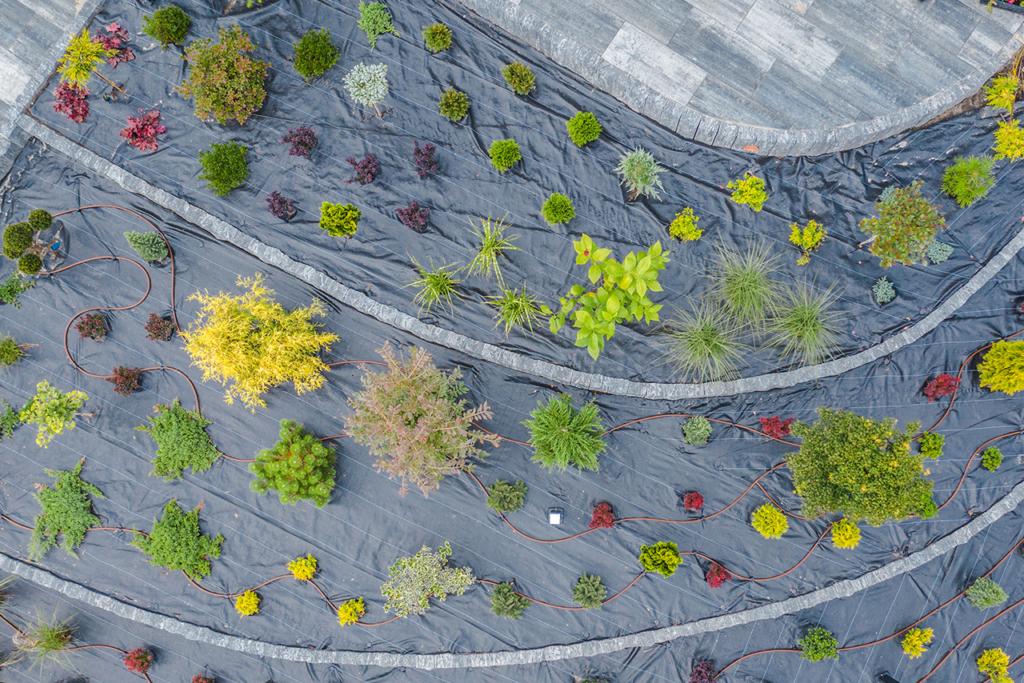Water is a precious resource, and with increasing concerns about water scarcity, finding ways to use it wisely in gardens and landscapes is more important than ever. Thankfully, there are several smart and innovative methods available that can help conserve water. From advanced irrigation techniques to choosing the right plants, these strategies can make a big difference in how efficiently water is used. Smart irrigation and landscaping techniques can help use water more efficiently and meet green building standards.

Drip-fed Subsurface Irrigation
Imagine a system that delivers water right where plants need it most—at their roots. That’s what drip-fed subsurface irrigation does! By placing special tubing or emitters below the soil surface, this method slowly releases water directly to the plants’ roots. This means less water is wasted through evaporation or runoff, and your plants get exactly what they need to thrive.
Soil Moisture Sensors
Soil moisture sensors can tell exactly how much moisture is in the soil; in this way the irrigation system waters the garden only when it’s needed. These sensors measure the moisture levels in the soil and provide real-time data to adjust irrigation schedules accordingly. By integrating soil moisture sensors into your irrigation system, you can prevent overwatering and ensure that water is significantly reduced.
Zoned Irrigation Control
Zoned irrigation control allows for more precise water management in different garden areas. By setting up irrigation zones based on plant types and their specific water needs, buildings can optimize water use and reduce waste. For example, a garden with a mix of high and low water-use plants can have separate watering schedules to ensure each plant group gets the right amount of water. This way, each type of plant gets the right amount of water without waste.
Reclaimed Water Systems
Reclaimed water systems are a sustainable choice for irrigation. Reclaimed water comes from sources like collected rainwater or greywater from the buildings sinks and showers. Setting up a system to capture and reuse this water for irrigation not only saves on the buildings’ water bills but also helps reduce the amount of wastewater that needs to be treated.
Drought-resistant Landscaping
Plants that are adapted to dry conditions require minimal additional watering, making them ideal for sustainable gardens. Choosing native or drought-tolerant plants not only conserves water but also reduces maintenance and the need for chemical treatments. This approach supports green building certifications by promoting efficient water use and sustainable landscaping practices.
Implementing these innovative irrigation and landscaping techniques can significantly enhance water efficiency in buildings aiming for green certifications. From drip-fed subsurface irrigation and reclaimed water systems to drought-resistant plants, zoned irrigation control, and soil moisture sensors, each method contributes to a more sustainable and efficient use of water. By adopting these strategies, buildings can achieve their certification goals, reduce their environmental impact, and promote a greener future.

